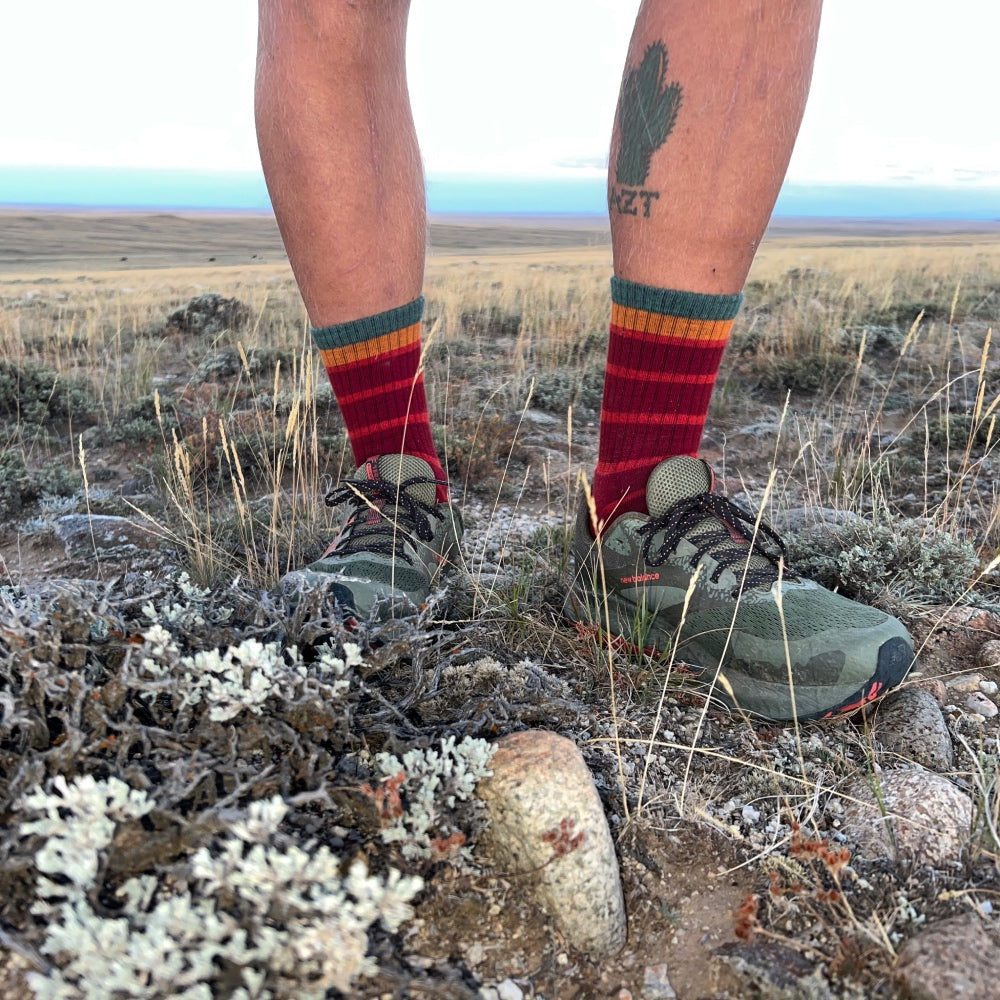The Boots (and Socks) on the Ground: Partnering with the Appalachian Trail Conservancy

When you put on your hiking socks, lace up your boots, and set out for a hike, do you ever wonder how a trail came to be? Perhaps we sometimes take for granted the trodden paths that lead us away from our everyday troubles and into the solace of nature.
In honor of National Trails Day this Saturday, we’re excited to share some history about one America's first national scenic trails and the nonprofit that is responsible for its conservation and stewardship.
An Iconic Hiking Path
Celebrated as the world’s most iconic hiking path, the Appalachian National Scenic Trail (A.T.) has been a source of adventure, renewal, and transformative experiences for millions of individuals of all ages over the last century.
While some may feel a calling to attempt a “thru-hike” of the A.T. across nearly 2,200 miles, many more are drawn to experience its wild and scenic qualities by hiking and enjoying sections at their own pace.
No matter the length of time spent on the A.T., it is a beloved cultural and natural treasure that both inspires and holds a special place in the hearts of countless people.
The History of the A.T.

The origins of this internationally-renowned hiking destination date back to 1921 when planner and visionary Benton MacKaye wrote a groundbreaking article, “An Appalachian Trail: A Project in Regional Planning,” that presented the A.T. as “a new approach to the problem of living,” providing opportunities not only for recreation, but also for health, recuperation, and connections with nature in an increasingly industrialized world. MacKaye understood the importance of the Trail being more than a footpath, advocating for a “realm” of protected lands.
A living monument to the resilience of the human spirit, the Appalachian Trail was blazed through 14 states through the dedication and work of thousands of volunteers and passionate individuals.
Fully connected in 1937, the A.T. is managed as a unit of the National Park System through a unique partnership between the public and private entities led by the Appalachian Trail Conservancy (ATC). Even though the A.T. now stretches uninterrupted from Georgia to Maine, there is still work to be done to ensure that it can continue to welcome visitors and retain its wild and beautiful nature.
Nature's Superhighway

Fast forward to today, MacKaye’s vision continues to motivate and guide the ATC’s mission to protect, manage, and advocate for the entire A.T. and its surrounding lands. And the magnitude of preserving the Trail experience has never been more ecologically or socially relevant.
This continuous footpath is surrounded by a protected landscape of more than 385,000 acres (about half the area of Yosemite National Park). A superhighway for biodiversity, the A.T. runs along the backbone of the Appalachian Mountains and is home to thousands of plant and animal species, including 2,000 classified as rare, threatened, endangered, and/or sensitive. While this landscape has been especially resilient to changing climates, it is threatened.
100 Years of Service

As it prepares to celebrate 100 years in service to the A.T. in 2025, the ATC is focused on addressing the challenges facing the Trail today and into the next century, including:
- Protecting the Trail and its scenic viewsheds and landscapes from the ever increasing pressure of development
- Educating a growing number of visitors so they can enjoy the A.T. responsibly and preserve the experience for future generations
- Restoring native habitats and creating more sustainable Trail-wide infrastructure that can withstand more frequent and extreme weather events.
The ATC is the unifying force, often behind the scenes, helping to ensure the Appalachian Trail is heathy and vibrant every year.

Darn Tough is proud to partner with the ATC since 2009. We debuted the ATC sock in 2011, which was the first sock Darn Tough ever knit with a give-back component. Originally launched at Boot height and updated in 2012 to Micro Crew height, the ATC Micro Crew Midweight Hiking Sock evolved over the years to its current look and colors. Darn Tough donates 5% of sales of the ATC sock to advance the nonprofit’s outdoor education programs and maintenance of the Appalachian Trail.
Learn more about the ATC’s work and check out their hiking resources and trail updates as you plan your first or next adventure on the A.T. by visiting appalachiantrail.org/.







